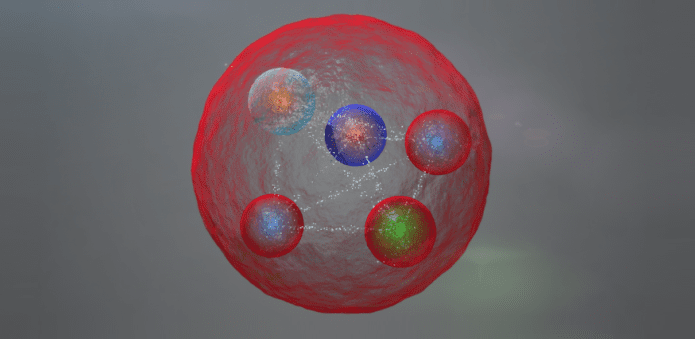Scientists announce discovery of a new class of particles called ‘Pentaquarks’ at the LHC
Exotic pentaquark particles have been revealed through an experiment at Cern’s Large Hadron Collider (LHC).
The LHC experiment at CERN’s Large Hadron Collider has reported the discovery of a new class of sub-atomic particles known as ‘Pentaquarks’. The association has submitted today a paper reporting these results to the journal Physical Review Letters.
LHCb spokesperson Guy Wilkinson said, “The pentaquark is not just any new element”. “It represents a way to aggregate quarks, specifically the basic constituents of ordinary protons and neutrons, in a pattern that has never been observed before in over 50 years of experimental searches. Studying its properties may allow us to understand better how ordinary substance, the protons and neutrons from which we’re all made, is constituted.”
In the year 1964, two physicists – Murray Gell Mann and George Zweig – independently planned the existence of the subatomic particles known as quarks.
They theorized that key properties of the particles known as baryons and mesons were best explained if they were in turn made up of other constituent particles. Zweig coined the term “aces” for the three new hypothesized building blocks, but it was Gell-Mann’s name “quark” that stuck.
The pentaquark is, possibly unsurprisingly, supposed to be made up of five smaller entities—four quarks and an anti-quark. Now, for the first time, researchers working on the LHCb experiment at the Collider have found proof for their existence.
Antiquarks are quarks of antimatter. In the year 1969, Gell-Mann was awarded the Nobel Prize in physics for this effort.
Earlier experiments that have searched for pentaquarks have proved unconvincing. Where the LHCb experiment differs is that it has been able to look for pentaquarks from many perspectives, with all pointing to the same conclusion. It’s as if the previous searches were looking for silhouettes in the dark, whereas LHCb conducted the search with the lights on and from all angles. The next step in the scrutiny will be to study how the quarks are bound together within the pentaquarks.
The team has recognized the existence of the pentaquark by watching for the decay of a baryon known as Lambda b. As it divide up into three well-known particles—well known to physicists at least: a J-psi, a proton and a charged kaon, if you’re keeping track—the scientists observed a change state in which two previously ignored particles could be identified.
During the mid-2000s, several teams claimed to have detected pentaquarks, but their discoveries were later damaged by other experiments.
“There is quite a history with pentaquarks, which is also why we were very careful in putting this paper forward,” Patrick Koppenburg, physics co-ordinator for LHCb at Cern, told BBC News.
The LHC powered up again in the month of April following a two-year shutdown to complete a programme of repairs and upgrades.

